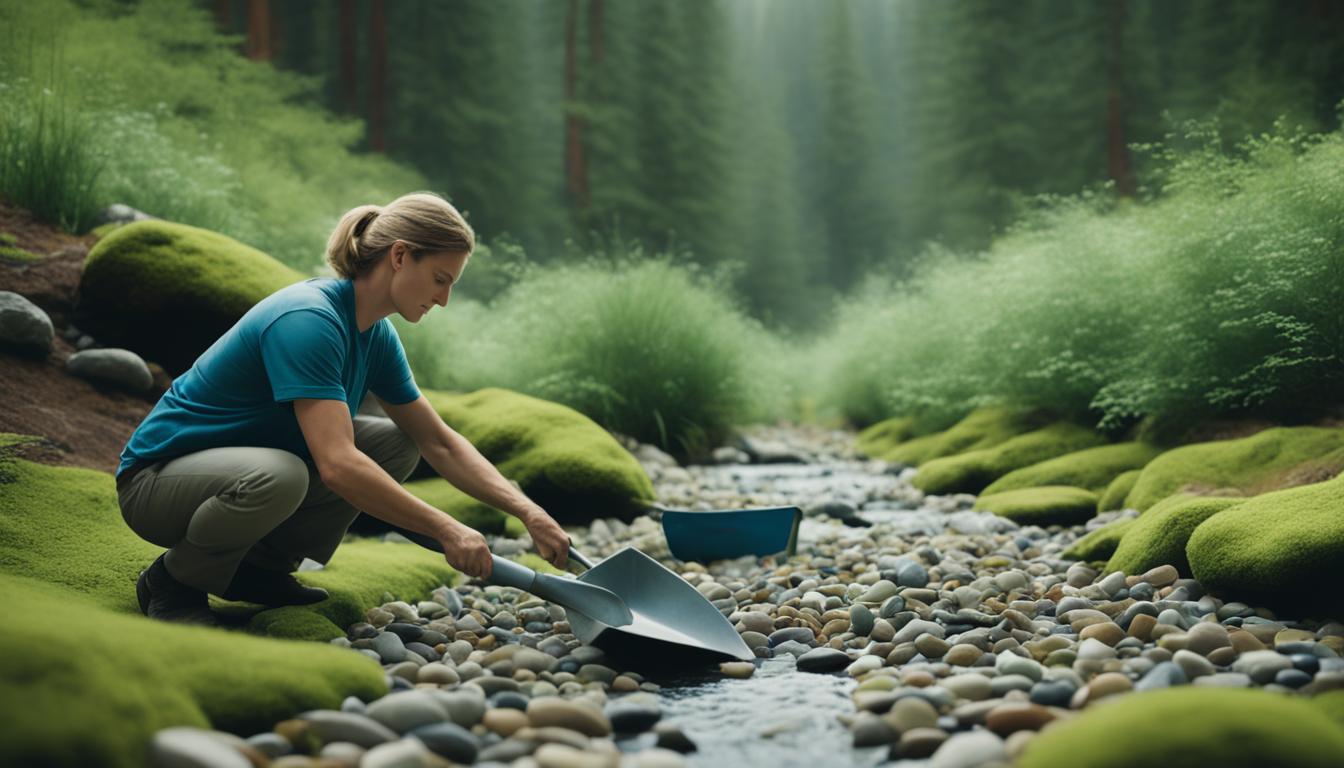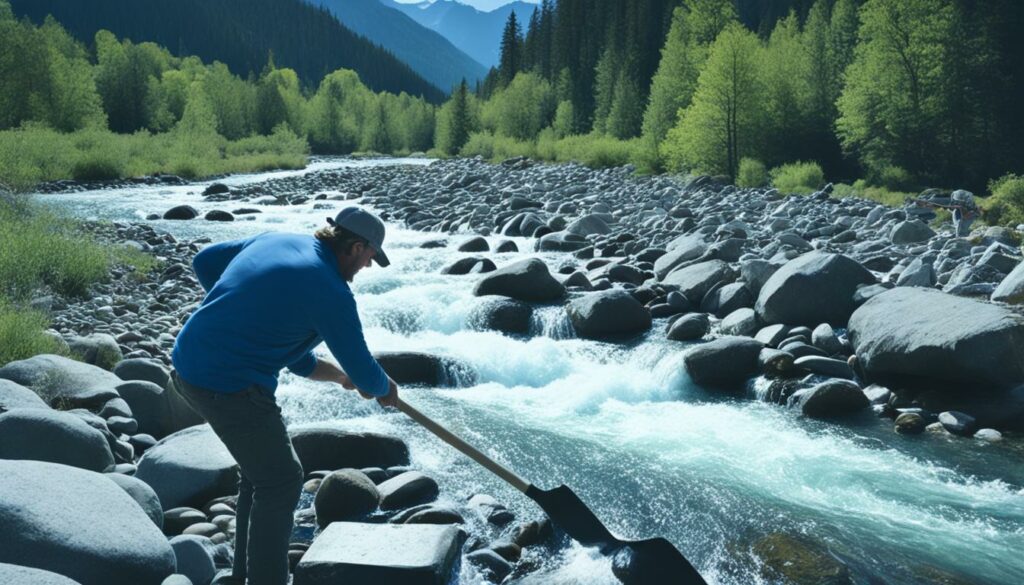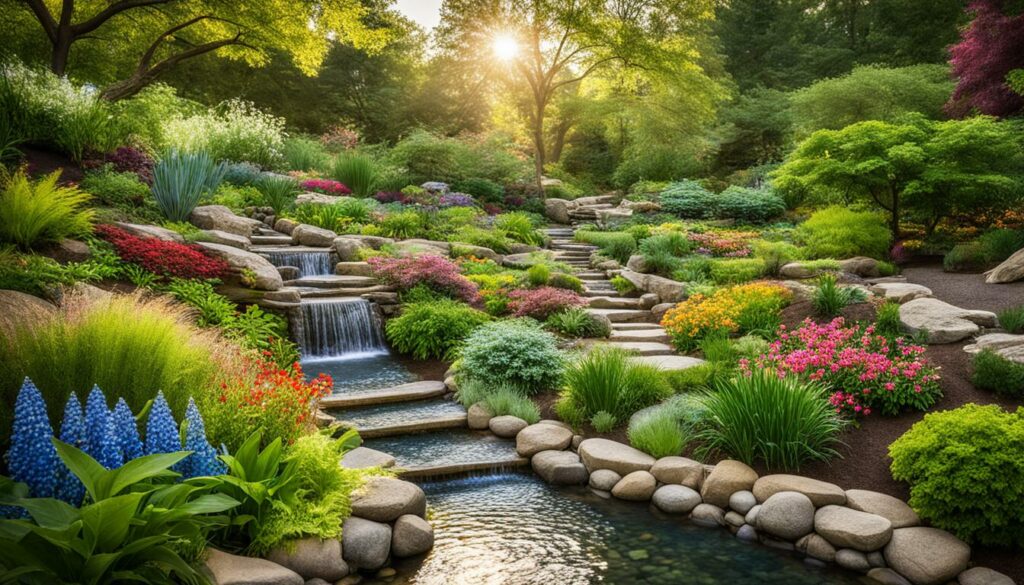
Creating a stunning backyard stream can transform your garden into a serene oasis. Stream construction not only enhances the aesthetic appeal of your outdoor space but also offers significant environmental benefits. By integrating natural water elements, you can foster a habitat for wildlife, improve drainage, and create a calming soundscape that promotes tranquility. This guide will walk you through the essential steps of building streams, from selecting the ideal location to preparing the ground for installation.
In the following sections, we will explore various aspects of garden streams, including their design, construction, and tips for ensuring your landscape streams thrive. Whether you desire a gentle babbling brook or a more robust water feature, understanding the fundamentals of stream construction will set you on the right path.
Understanding the Basics of Stream Construction
Embarking on the journey of stream construction requires a solid foundation. Understanding stream features is essential for creating a water feature that harmonizes with the surrounding landscape. The basics of stream construction encompass crucial elements like water flow, elevation changes, and the integration of ponds.
Awareness of how a stream interacts with its environment is vital. Factors such as drainage issues can impact not only the stream's functionality but also the overall health of the ecosystem. During the process of introductory stream construction, one must prioritize the creation of naturalistic landscapes that appear organic and inviting.

Key considerations extend beyond aesthetics to include necessary permits and local regulations governing backyard water features. These legal aspects often determine what is feasible in your area. Understanding local environmental impacts is equally important, as responsible construction practices help protect natural habitats.
Taking the time to grasp the basics of stream construction can lead to a more successful implementation of your water feature. By focusing on the essential elements and regulations, designers can achieve a balanced and sustainable backyard stream.
Choosing the Ideal Location for Your Garden Stream
Selecting the right spot for a garden stream is vital to achieve the intended aesthetic and functional outcome. The ideal garden stream location should be easily visible from key outdoor areas such as patios or decks. This proximity enhances enjoyment, allowing for appreciation of the natural beauty and soothing sounds of waterflow.
When considering location considerations for streams, several factors come into play:
- Yard Size: The scale of your yard dictates the size and complexity of the stream. A larger yard offers more flexibility in design, while a smaller space may require a more compact solution.
- Slope: The natural slope of your land significantly influences water movement and stream design. Streams benefit from a gentle incline, promoting a natural flow without excessive speed.
- Integration with Landscape: Connect the stream harmoniously with existing plants and features. Avoid disrupting the natural ecosystem; thoughtful placement can enhance biodiversity.
Considering visibility is crucial when selecting stream sites. Aim for placement within ten feet of outdoor living spaces. Such alignment can promote relaxation and enjoyment of nature. Additionally, this distance helps in facilitating maintenance, making it easier to tend to the stream without extensive effort.

Designing Your Stream Layout
When creating an effective stream design layout, consideration of both stream size and slope is essential. Additionally, planning for visibility from your home can enhance the overall experience and aesthetics of your garden space.
Deciding on Stream Size and Slope
The stream size and slope play a pivotal role in how the water flows and how it integrates into your landscape. The size should reflect the outdoor space available while maximizing the visual impact in your garden. Similarly, the slope must be carefully calculated to facilitate a natural flow of water. A gentle gradient encourages movement without causing stagnation, while too steep a slope may lead to erosion. Techniques such as using a hose to outline the anticipated shape can help visualize the stream's placement. Marking the ground with paint further aids in assessing the layout before any digging begins.
Considering Visibility from Your Home
Stream visibility considerations also significantly contribute to the enjoyment of your outdoor living space. A visible stream enhances the overall appeal and can serve as a tranquil focal point in your garden. Positioning the stream close to seating areas allows for easy enjoyment of its calming sounds, and aesthetic qualities. Make sure to evaluate sightlines from various viewpoints in your yard and interior spaces. This ensures your stream remains an engaging feature that elegantly integrates with your landscape.
Stream Construction: Preparing the Ground
Before the water flows freely through your newly designed garden stream, careful preparation of the ground is crucial. This phase involves two primary tasks: digging the basin and streambed, followed by laying down the necessary underlayment and liner. Proper execution ensures that your stream will function effectively and maintain its beauty for years to come.
Digging the Basin and Streambed
When it comes to preparing the ground for your stream, the first step is digging the stream basin. This basin should be level and adequately sized to hold the desired volume of water. It's important to consider depth and shape, as these factors will influence water flow and aesthetics. Once the basin is established, you can proceed to shape the streambed, keeping in mind the curves and slopes that will create a natural look.
Laying Down Underlayment and Liner
After successfully digging the basin and streambed, the next important step is underlayment and liner installation for streams. An EPDM rubber liner is recommended due to its durability and ease of handling. Before laying down the liner, place an underlayment to protect it from potential damage caused by rocks and roots. Layering techniques should be applied carefully to prevent leaks, ensuring a smooth finish that will enhance the flow of water in your stream.








